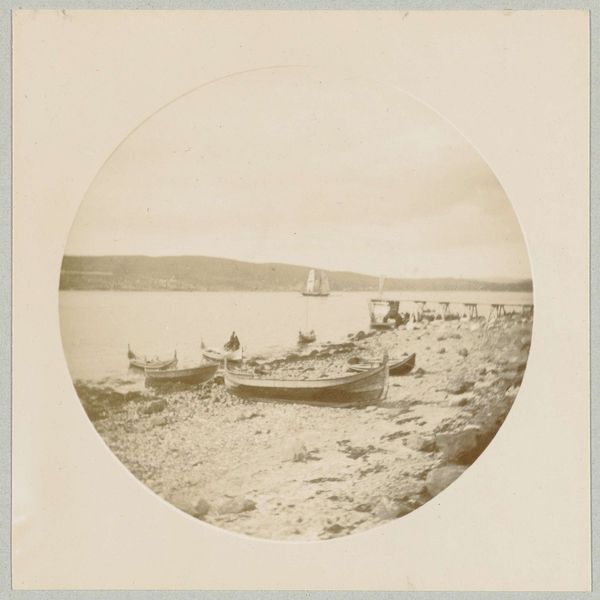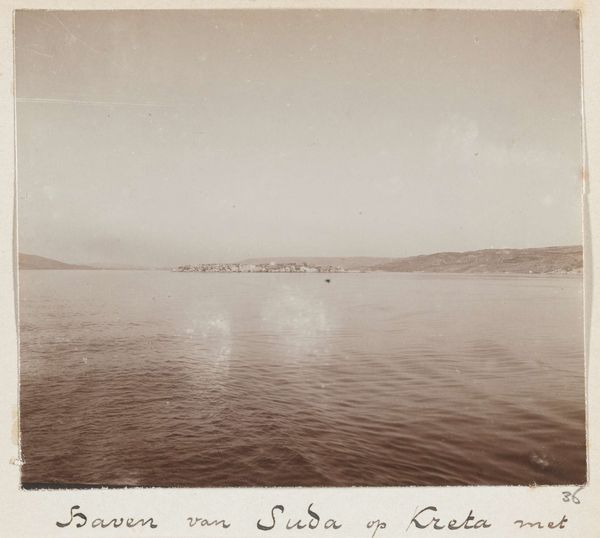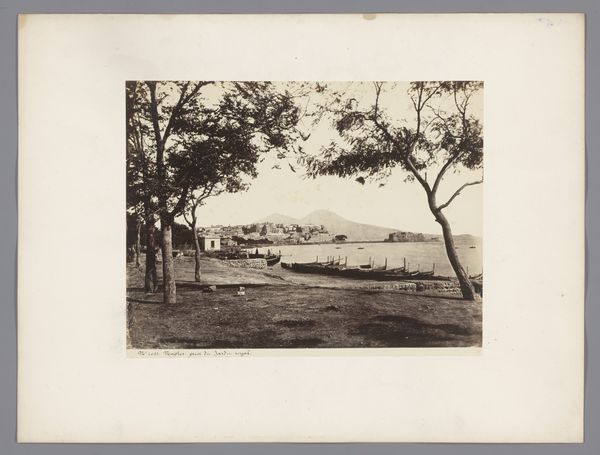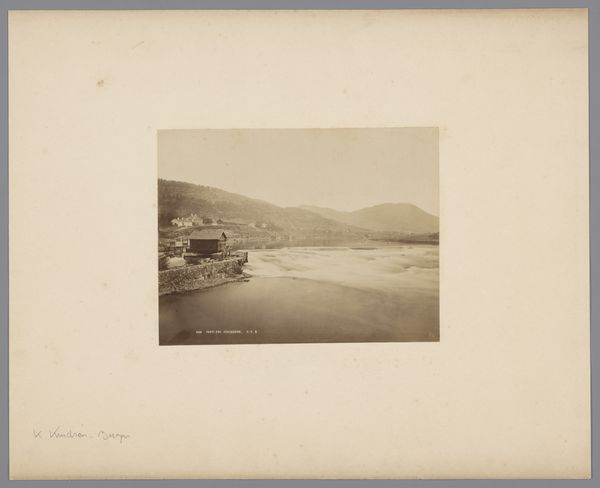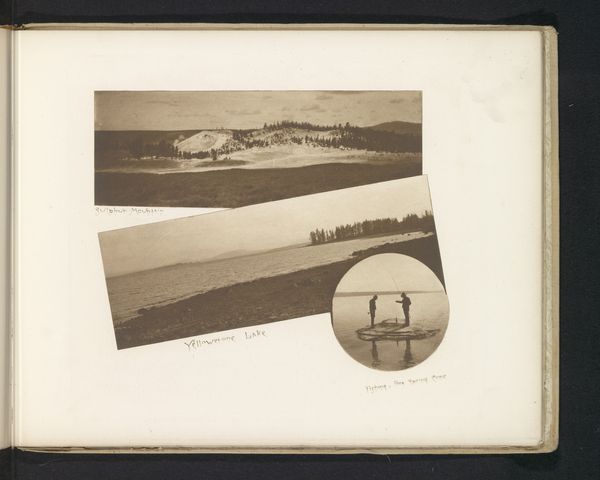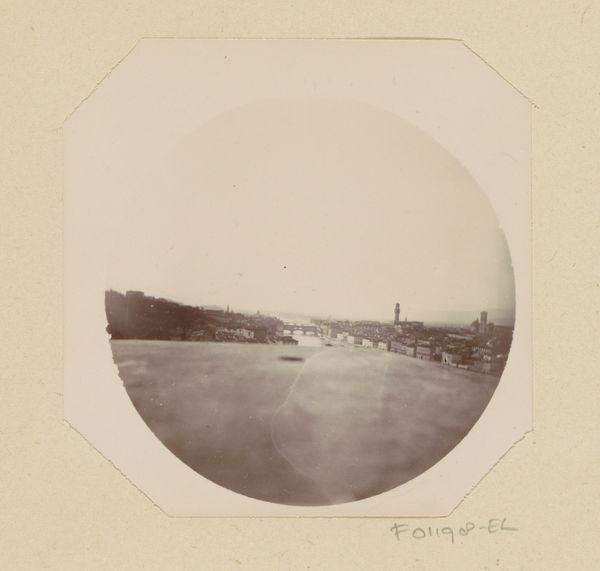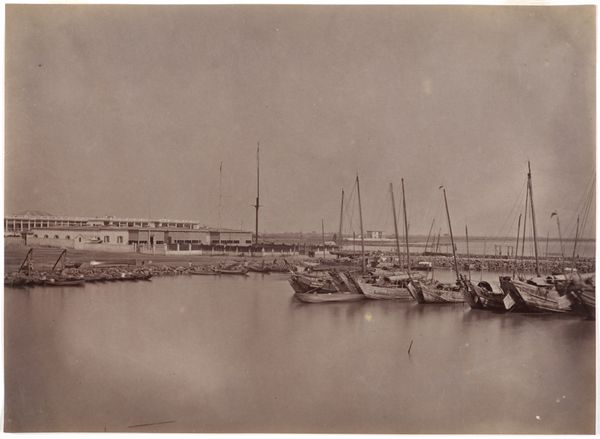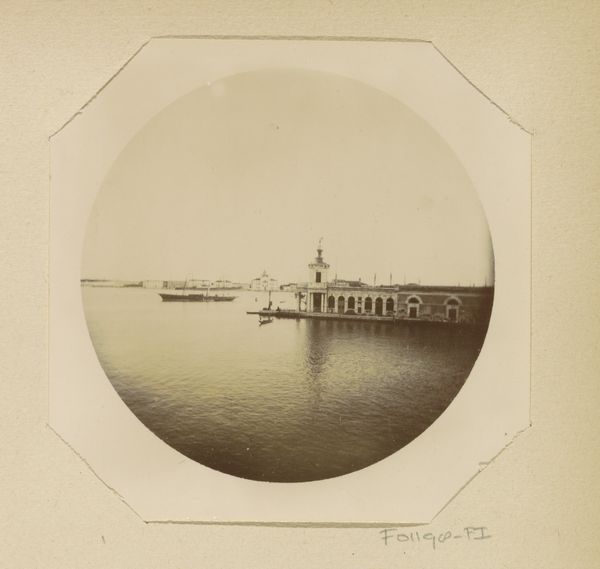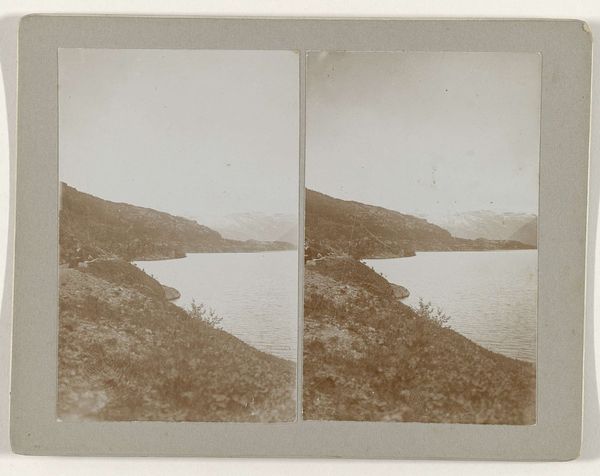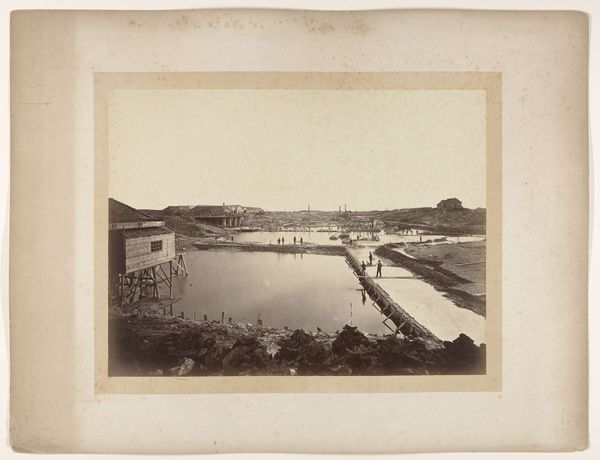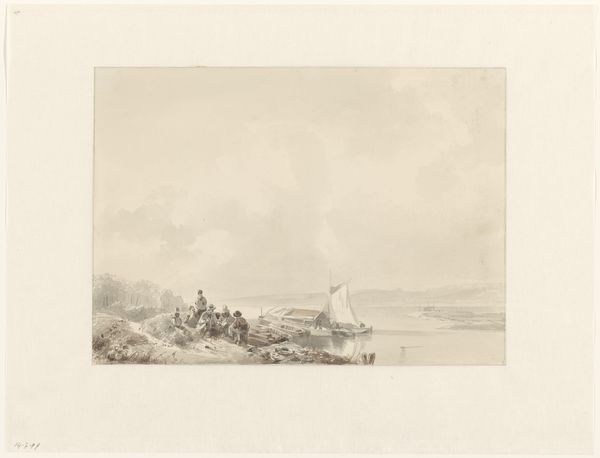
albumen-print, photography, albumen-print
#
albumen-print
#
portrait
#
still-life-photography
#
impressionism
#
landscape
#
photography
#
united-states
#
genre-painting
#
albumen-print
Dimensions: 7 3/16 x 9 3/8 in. (18.26 x 23.81 cm) (image)9 13/16 x 11 15/16 in. (24.92 x 30.32 cm) (mount)
Copyright: Public Domain
Editor: Here we have "Mississippi River at Winona," an albumen print dating back to the 1880s or 90s. It feels incredibly balanced, almost like a staged tableau, but undeniably picturesque. What structural elements do you find most compelling here? Curator: The albumen print lends a distinct tonal range to the piece, allowing the artist to manipulate light and shadow for dramatic effect. Notice how the composition relies on a tripartite structure: the textured foreground, the tranquil river bisected by those striking bridges, and the muted sky above. It’s the bridges, really, that are the fulcrum of the whole image. Editor: They definitely dominate the scene. The lines of the bridges are mirrored in the boat as well, almost anchoring the lone figure by the shore. Is that what you'd call repetition? Curator: Precisely. That horizontal thrust of form and line draws your eye from the foreground to the distant hills. Ask yourself: how does the light falling upon the water contribute to this dynamism? And how does it work with the overall sepia tones? Editor: It creates depth, subtly guiding us from the stark details in the front to the hazy background. Almost like contrasting textures, inviting the eye to move. Curator: Precisely. This movement underscores the careful consideration of the spatial organization in service to that objective. It's a meticulously arranged reality. Do you see other compositional echoes? Editor: Looking closer, the roundness of the hills beyond also reminds me of the rounded arches of the bridge! Thanks for that. Curator: My pleasure. Exploring such arrangements of form reveals that, within photographic practice of the time, a heightened attention to constructed aesthetics persisted, often eclipsing concerns of sheer, documentary record. Editor: Absolutely. I can definitely appreciate it more after having this conversation with you!
Comments
No comments
Be the first to comment and join the conversation on the ultimate creative platform.
